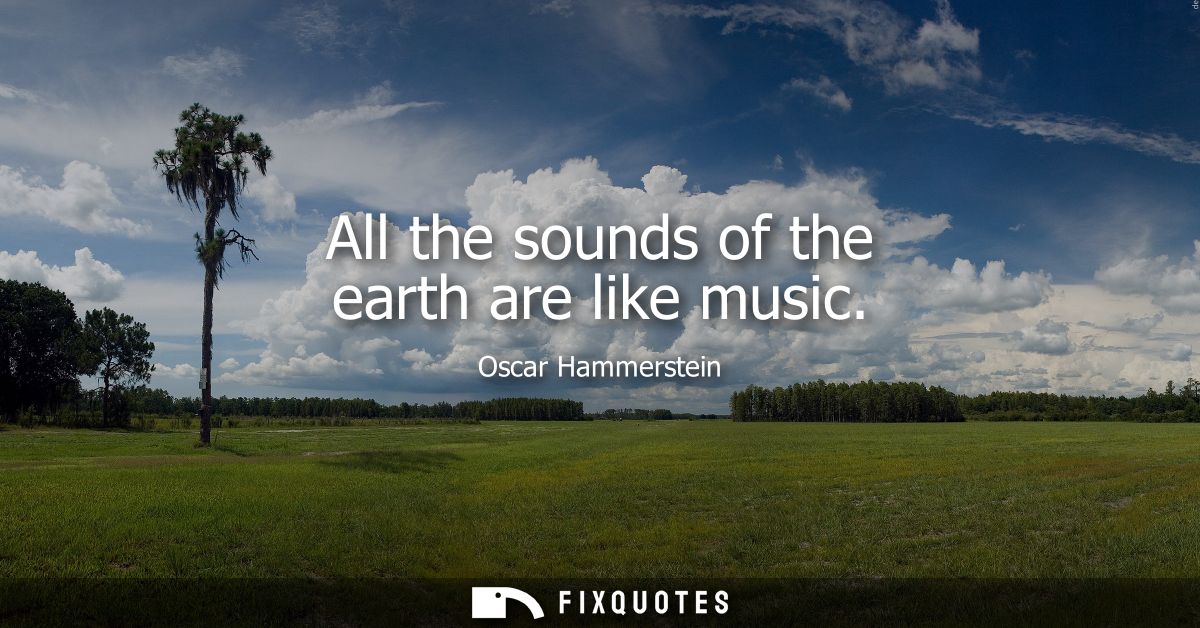"All the sounds of the earth are like music"
About this Quote
Oscar Hammerstein’s phrase, “All the sounds of the earth are like music,” evokes the notion that beauty and harmony exist beyond traditional compositions, inviting a deeper appreciation for the natural world. Everyday life is often filled with noise, birds calling at dawn, rain tapping against windows, wind rustling leaves, and distant thunder rolling across hills. Hammerstein frames these elements not as mere background or interruptions, but as a symphony offered by nature itself. The comparison to music suggests that there is rhythm, melody, and orchestration in what might otherwise be overlooked or dismissed as noise.
Listening carefully, a person might detect complex patterns: crickets chirping in unison, the syncopated drip of melting snow, or the steady cadence of footsteps on a packed path. Such sounds, woven together, become a score unique to a moment and a place. By drawing this parallel, Hammerstein encourages an awakening of the senses, urging individuals to move from passive hearing to intentional listening, much like a music lover discerning nuances in a song or a musician interpreting the subtleties of a composition.
The idea also speaks to the interconnectedness between human creativity and the environment. Many musical instruments, woodwind, percussion, string, are inspired by or directly use materials from the earth. Birdsongs have influenced human melody making, and the cycles and patterns in nature often find echoes in musical arrangement and rhythm. Not only does this perspective grant everyday sounds artistic significance, but it also nurtures gratitude and mindfulness. By recognizing music in daily existence, there is a shift towards greater attentiveness and an embrace of the ordinary as extraordinary.
Hammerstein’s sentiment becomes an invitation to reconsider boundaries between art and life. When every sound becomes part of a global symphony, life itself becomes richer, offering endless opportunities for wonder and emotional resonance through the simple act of listening.
More details
About the Author

